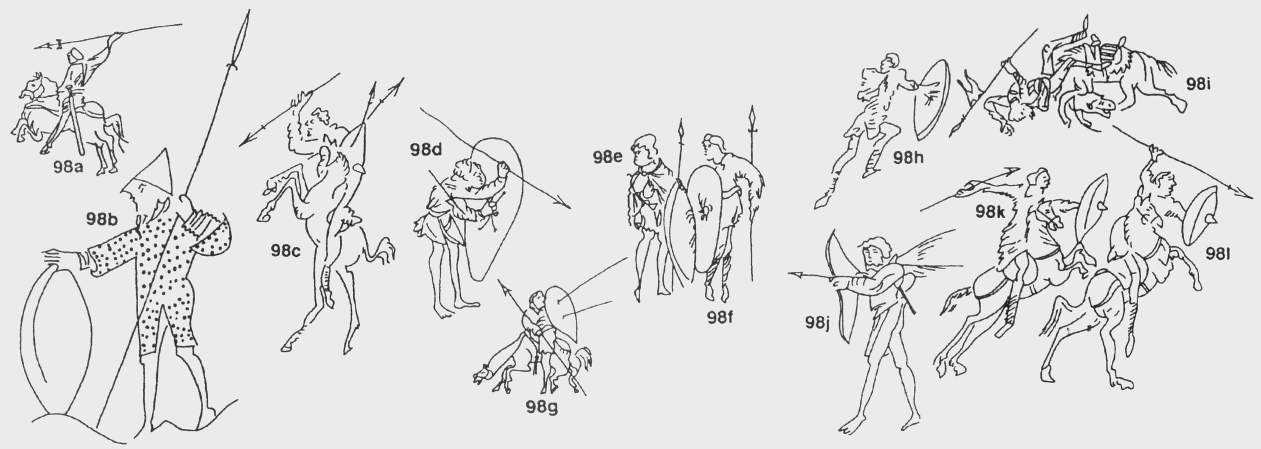Find the perfect fit with Amazon Prime. Try Before You Buy.

Try Amazon Audible Premium Plus and Get Up to Two Free Audiobooks
British Library, MS Harley 603
Harley Psalter
Click on a thumbnail for a larger image.

Harley Psalter f.2r, Psalm 2

Harley Psalter f.4r, Psalm 7

Harley Psalter f.12r, Psalm 19

Harley Psalter f.25r lower, Psalm 43

Harley Psalter f.29v, Psalm 53

Harley Psalter f.32v, Psalm 59

Harley Psalter f.64r, Psalm 119

Harley Psalter f.65v, Psalm 123

Harley Psalter f.68r, Psalm 132

Harley Psalter f.69r, Psalm 133

Harley Psalter f.70r, Psalm 136

Harley Psalter f.73v, David against Goliath
Origin: England, S. E. (Canterbury)
Date: 1st half of the 11th century
Source: British Library, MS Harley 603
The Harley Psalter
Produced in England, Canterbury, Christ Church, early 11th century, with additions executed ca. 1140.
London, British Library, Harley MS 603
The Harley Psalter is the first copy of the Utrecht Pslater,
initiated in the early 11th century and partially completed by three groups of artisans through the third quarter of the century.
Twelve tinted drawings illustrating Psalms 52–62 and 65 were added later, around 1140.
The illustrations preserve a great deal of the compositions and the dynamism of the Utrecht drawings, but were executed in green, blue, pale sepia, and red inks.
Source: Facsimiles of manuscripts illuminated in the British Isles, Special Collections, Pius XII Memorial Library, Saint Louis University
Referenced on p54, Arms and Armour of the Crusading Era, 1050-1350, Western Europe and the Crusader States by David Nicolle

Click on a figure to see the folio referenced.
98A-L Utrecht [Harley] Psalter, Wessex, early 11th century
(British Library, Ms. Harl. 603, London, England)
A-f.69r;
B-f.73;
C-f.25;
D-f.68r [f.65v];
E-F f.68r;
G-f.69r;
H-f.25;
I-f.29v;
J-f.73 [f.64r];
K-L f.25.
This and similar manuscripts are believed to be copies of a Carolingian psalter [the Utrecht Psalter].
They use the same agitated linear style, but are clearly not following all the details of military equipment shown in the original manuscript.
Not only are kite-shaped shields shown (D and L), but so are tall saddles with raised pommel and cantle, almost exactly the same as seen in the Bayeux Tapestry (I).
Another horseman has a straight-legged riding position and a very long cavalry sword (A).
Other features are more old-fashioned, including many round shields (B, C, E, F, H, K and L) and the throwing of javelins (A, C, K and H).
Such a mixture of old and new would not be surprising in the early to mid-11th century.
The angel using a bow (J) is ultimately copied from a southern European original, whereas the armoured figure (B) might reflect the best equipped huscarls of the period.
He has a conical helmet with a broad nasal and a mail hauberk without a coif but with short, broad, untailored sleeves.
For terms in italics see Terminology in Armour of the Crusading Era, 1050-1350 - Western Europe and the Crusader States - David Nicolle
See also the Utrecht Psalter, Utrecht Rijksuniversiteit Bibliotheek, Hs. 32
Other 11th Century Illustrations of Costume & Soldiers













